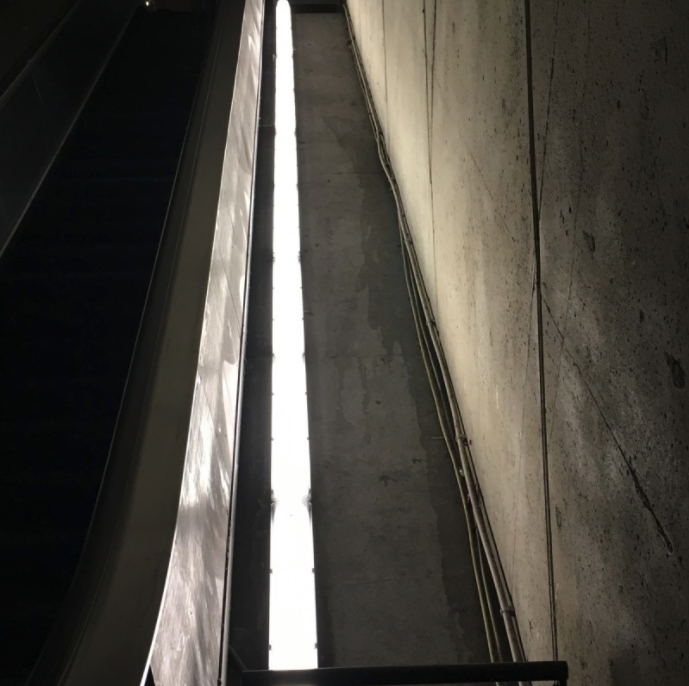Cleaning up Metro stations would do more than just make them look nice

Trash on the Red line track bed at Metro Center. Image by m01229 licensed under Creative Commons.
Cleaning up stations is part of Metro's Back2Good plan for addressing safety, reliability, and financial issues in 2017. And while some have said station cleaning is just cosmetic, it actually does a lot for making the system safer.
Under Back2Good, “all 91 stations will be power washed, scrubbed, and polished annually.” On top of this, stations will begin receiving lighting upgrades that will result in brighter platforms and (hopefully) more reliable lighting components. Such actions should help reduce the likelihood of fires and electrical problems that have plagued the system.
Dirty platforms and trains can have a real impact in the reliability of a subway system. The most serious problem that can occur is a track fire resulting from trash or other debris coming into contact with the third rail. This happened in June at Gallery Place on the Green/Yellow lines, shutting down the station and delaying thousands of riders.
Trash on the Red line track bed at Metro Center. Image by the author.
Grime-covered stations can also make it easier for stray electrical current to “jump” from the third rail to another surface. Allow enough dirt, brake dust, and other particulates to accumulate on station surfaces and it's usually only a matter of time until the electricity in the finds an alternate— and dangerous— path. This has happened twice this year, at Metro Center and Federal Center SW.
Putting aside the very real impacts cleanliness has on operations, there is also a strong argument to be made based simply on how things look. Clean stations are just nicer places to be; they have less trash, less stink, and (hopefully) fewer rats. Cleaner stations are often brighter stations, too. That means you can read the paper without squinting, and for riders who have limited vision, brighter stations can make it easier to safely navigate Metro.
Just look at the difference between the two photos below. The first is of Federal Center SW, which has broken lights and dirty vault walls, while the second is of a recently-cleaned Potomac Avenue station:
Federal Center SW. Image by the author.
Glad to see the Potomac Ave station looking bright and clean after being closed for 16 days. #wmata #safetrack pic.twitter.com/RPkUSQVbOY
— Christina Williams (@ChristinaWill54) July 4, 2016
For decades, transit has been stereotyped in the US as being an unpleasant experience. Appearance influences perception, and excessively dark or dirty stations reinforce negative impressions about public transport, discouraging people from using the system. Keeping stations clean can help overcome such notions.
Again, check out the difference clean vs. dirty can make:
Brand new escalator vault lights at Gallery Place. Image by the author.
Older escalator vault lights at Van Ness-UDC. Image by the author.
If Metro can deliver on its promise to clean up stations, tracks, and train cars, customers could experience noticeably nicer station environments than what they've come to know over the past decade. Of course, getting trains running safely and reliably must be the top priority, but cleaner stations can also go a long way in getting Metro “back to good.”
